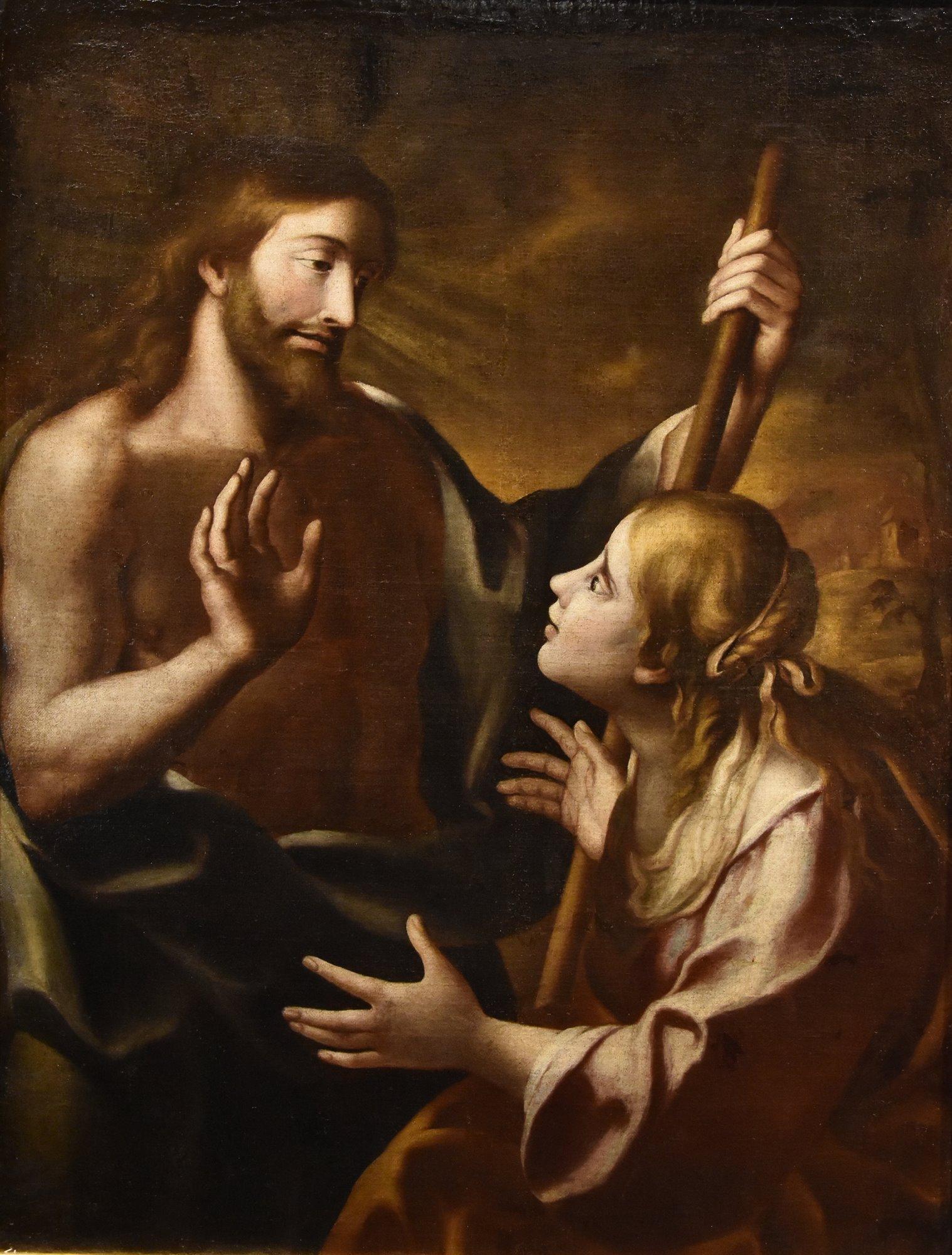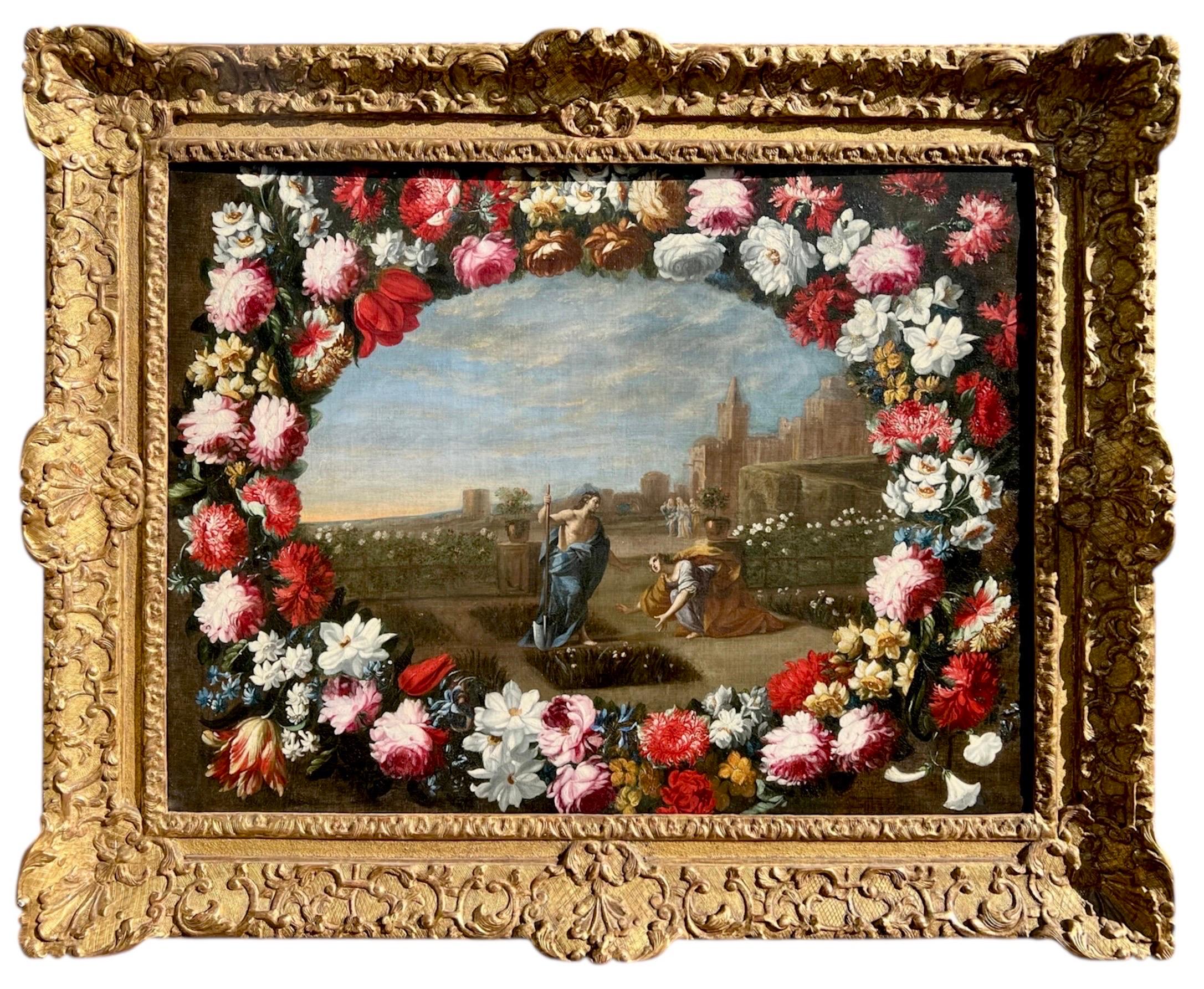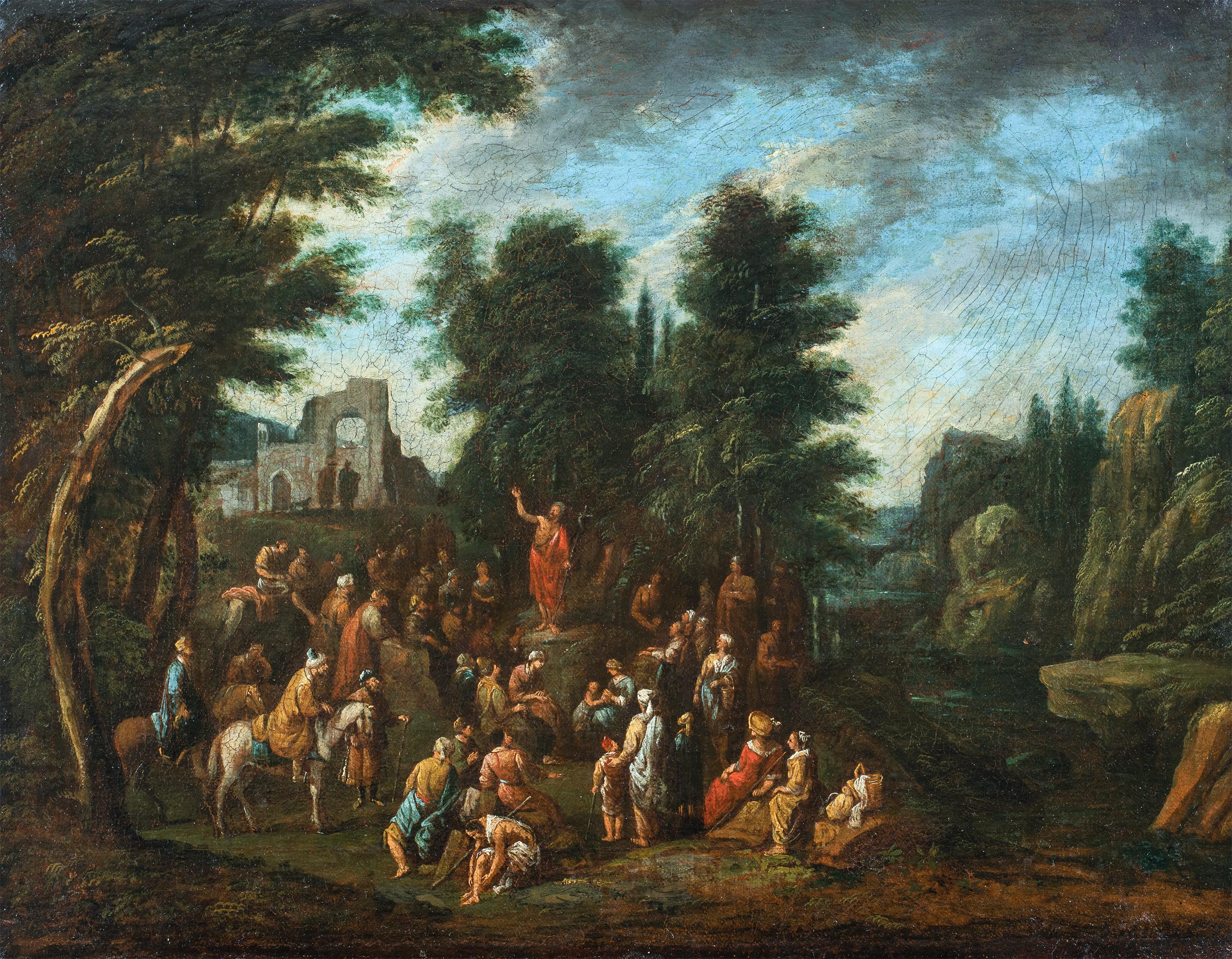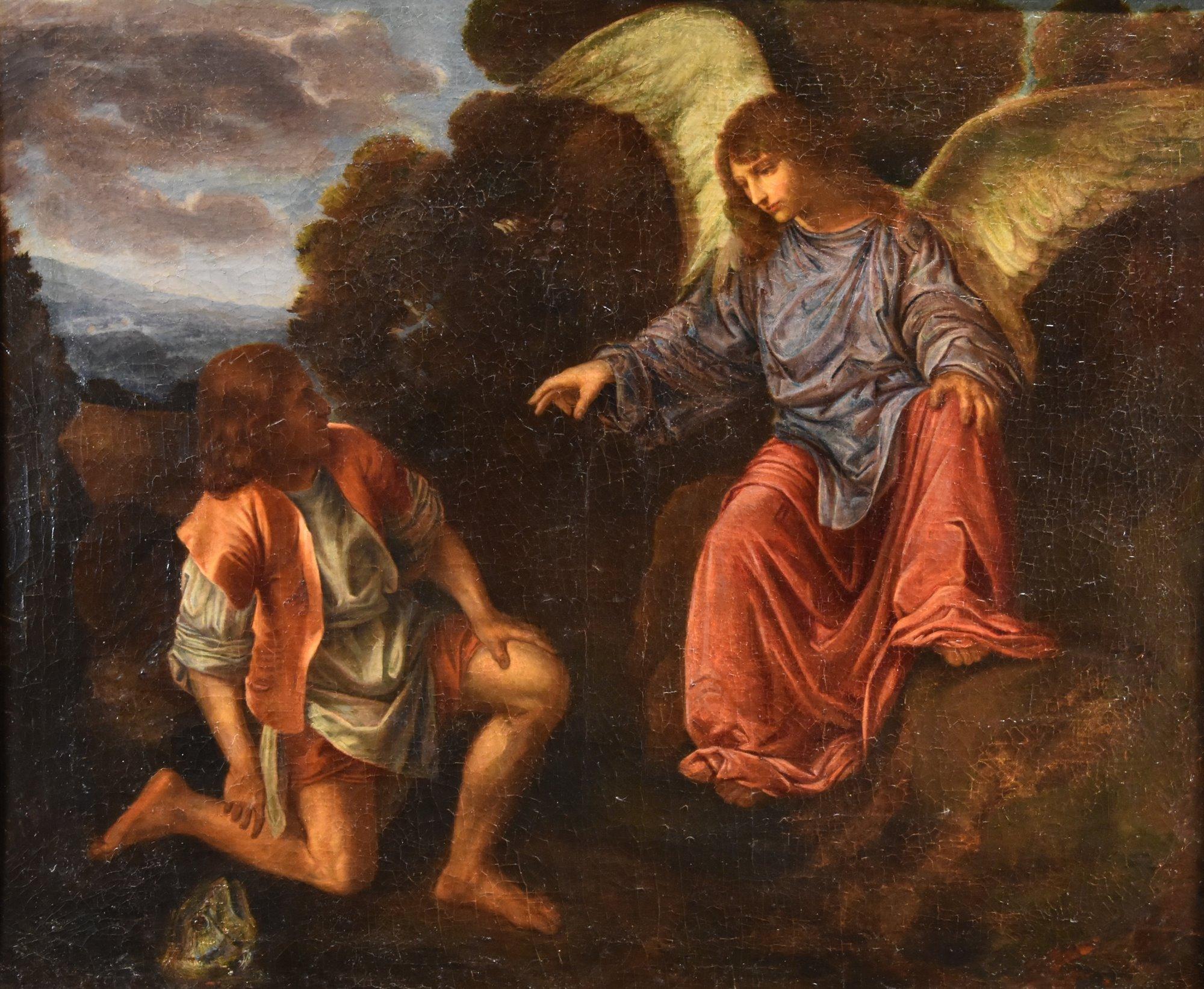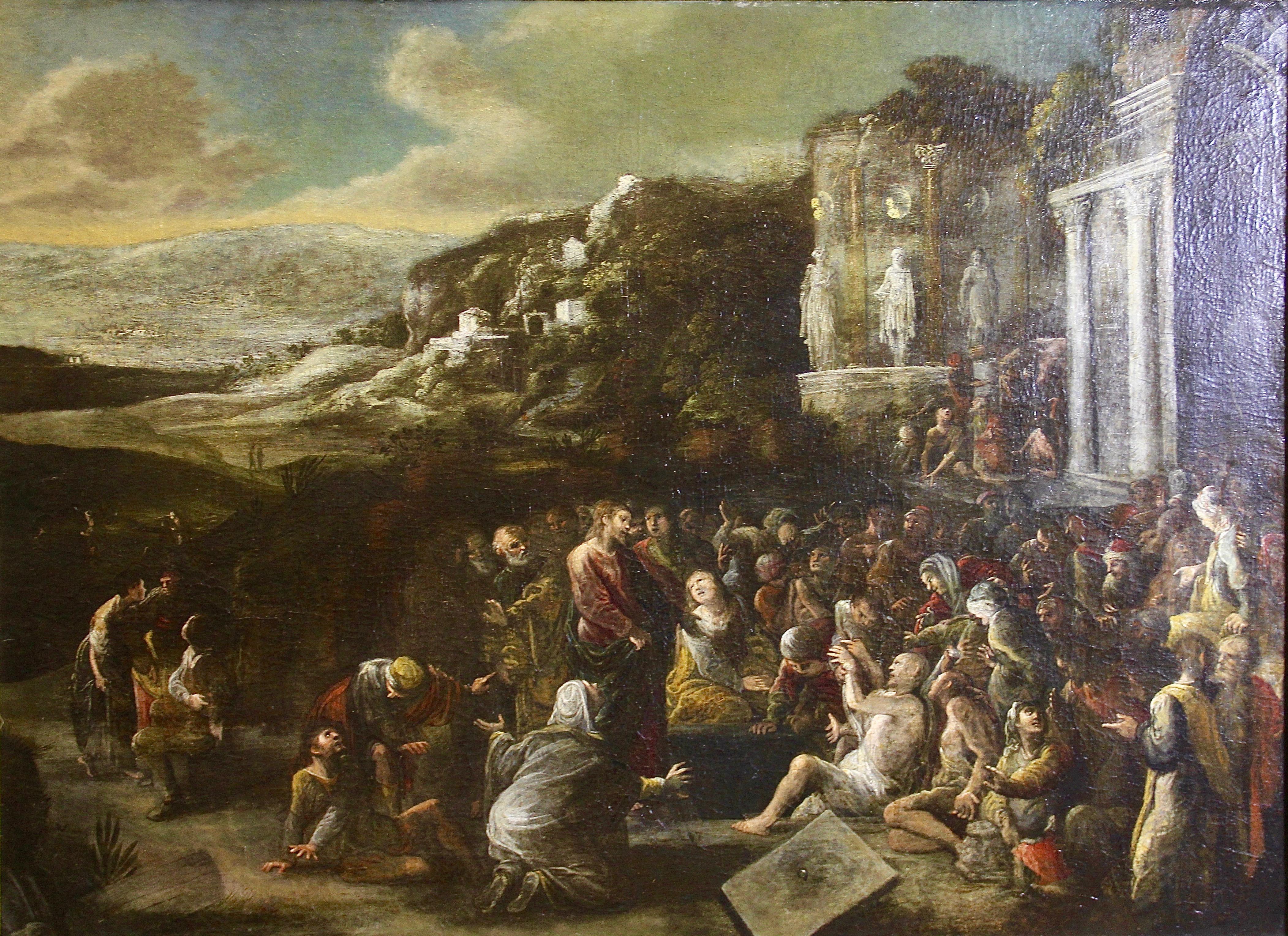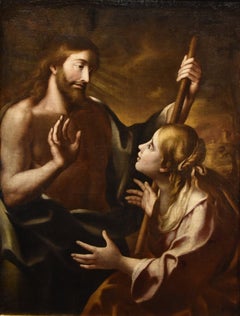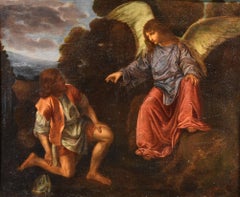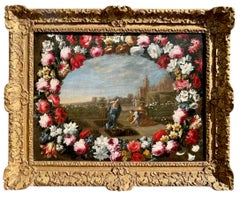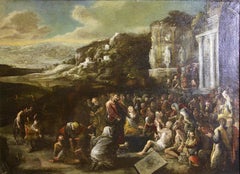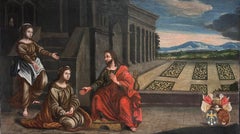Items Similar to Noli Me Tangere Brueghel 17th Century Paint OIl on canvas Old master Religious
Video Loading
Want more images or videos?
Request additional images or videos from the seller
1 of 19
Noli Me Tangere Brueghel 17th Century Paint OIl on canvas Old master Religious1630-1680
1630-1680
$18,279.33
$22,849.1620% Off
£13,531.95
£16,914.9420% Off
€15,392
€19,24020% Off
CA$25,184.51
CA$31,480.6320% Off
A$28,059.10
A$35,073.8720% Off
CHF 14,648.18
CHF 18,310.2220% Off
MX$340,674.82
MX$425,843.5320% Off
NOK 184,118.01
NOK 230,147.5220% Off
SEK 174,036.25
SEK 217,545.3120% Off
DKK 117,197.41
DKK 146,496.7720% Off
About the Item
Jan Brueghel the Younger (Antwerp 1601–1678) workshop of
Noli me tangere
Oil on canvas 97 x 128 cm - In frame 114 x 143 cm
This is a fascinating work, both for its subject, featuring Christ and Mary Magdalene, and for its execution, displaying all the distinctive characteristics of the Flemish painter Jan Brueghel the Younger (Antwerp 1601–1678), son of one of the most important dynasties of Flemish painters, being the heir of Jan Brueghel the Elder and nephew of Pieter Brueghel the Elder, from whom he inherited the family workshop.
It depicts the biblical episode known as “Noli me tangere” and represents the appearance of the risen Jesus to Mary Magdalene, who mistakes him for “the gardener”. For this reason, Christ is often depicted holding a spade, precisely to represent Mary Magdalene's mistake in not recognising him immediately in the biblical account.
Once his identity is revealed, Christ utters the famous phrase Noli me tangere (Latin for “do not hold me”), urging Mary Magdalene to let him go and to tell the disciples of his resurrection.
This is a theme dear to 17th-century iconography and was taken up several times by Jan Brueghel the Younger or his workshop, with variations and often in collaboration with other painters who worked on the figures, from the early versions with Hendrick van Balen and Jan Van Kesse to the partnership with artists from the workshop of Pierre Paul Rubens.
We can mention, by way of comparison, the “Noli me tangere” by Jan Brueghel the Younger, in the Musée des Beaux-Arts in Nancy (fig.1), the “Noli me tangere” in the Kunsthalle in Bremen (fig. 2) by Jan Bruegel the Younger with Peter Paul Rubens, or the painting with the same subject, attributed to Jan Brueghel the Younger and Victor Wolfvoet, which passed through Schloss Ahlden (fig. 3).
A composition similar to ours in many details - from the tree on the right, with white hydrangeas and pink roses, to the stone fountain, the presence of the orange tree and the two ducks - is “Allegory of Love” by Jan Jan Brueghel the Younger, on display at the Venaria Reale in Turin (fig. 4).
The scene is orchestrated with the typical opulence that has always distinguished the works of the flourishing Brueghel workshop, with the two figures framed by a vast landscape where colourful flowers bloom and trees are laden with ripe fruit, in a clear allusion to the earthly paradise.
Every detail is rendered with meticulous attention to detail: the birds, the flowering plants, various garden produce scattered on the ground: each element is placed in a harmonious composition and rendered with meticulousness and delicacy, giving us a work that is both rich and extremely refined.
The quality of the rich palette, with its vigorous accents of colour, deserves praise, enhancing the painting and creating a luminous atmosphere, immersing the scene in a soft light with fairy-tale accents.
The landscape in the background is enchanting, with a city with fortified walls and a circular building alluding to the Temple of Jerusalem.
In the centre, a hill dotted with trees shelters the open tomb of Christ, carved into the rock, with the three Marys who have just arrived at the tomb to find it empty. Finally, on the left, Mount Golgotha with four crosses, one more than usual, according to a typical feature of some works from the Brueghel workshop (cf. Crucifixion, workshop of Pieter Brueghel the Younger, Church of Santa Maria Maddalena, La Spezia): according to some scholars, the fourth cross represents the submission of the Flemish people to Spanish rule during the siege of Ghent, in the context of the Eighty Years' War (1568-1648).
ADDITIONAL INFORMATION:
The work is sold complete with a nice frame and comes with a certificate of authenticity and a descriptive iconographic card.
We take care of and organise the transport of the purchased works, both in Italy and abroad, through professional and insured carriers.
It is also possible to view the painting in the gallery in Riva del Garda, where we will be happy to welcome you and show you our collection of works.
Please contact us, without obligation, for any further information.
- Creation Year:1630-1680
- Dimensions:Height: 44.89 in (114 cm)Width: 56.3 in (143 cm)
- Medium:
- Movement & Style:
- Circle Of:Jan Brueghel The Younger (antwerp 1601–1678)
- Period:
- Condition:
- Gallery Location:Riva del Garda, IT
- Reference Number:1stDibs: LU988116624362
About the Seller
4.9
Platinum Seller
Premium sellers with a 4.7+ rating and 24-hour response times
Established in 2017
1stDibs seller since 2018
256 sales on 1stDibs
Typical response time: <1 hour
- ShippingRetrieving quote...Shipping from: Riva del Garda, Italy
- Return Policy
Authenticity Guarantee
In the unlikely event there’s an issue with an item’s authenticity, contact us within 1 year for a full refund. DetailsMoney-Back Guarantee
If your item is not as described, is damaged in transit, or does not arrive, contact us within 7 days for a full refund. Details24-Hour Cancellation
You have a 24-hour grace period in which to reconsider your purchase, with no questions asked.Vetted Professional Sellers
Our world-class sellers must adhere to strict standards for service and quality, maintaining the integrity of our listings.Price-Match Guarantee
If you find that a seller listed the same item for a lower price elsewhere, we’ll match it.Trusted Global Delivery
Our best-in-class carrier network provides specialized shipping options worldwide, including custom delivery.More From This Seller
View AllNoli Me Tangere Christ Magdalene Cignani Paint 17th Century Oil on canvas Italy
By Carlo Cignani (Bologna 1628 - Forlì 1719)
Located in Riva del Garda, IT
Late 17th-century Bolognese painter
Circle of Carlo Cignani (Bologna 1628 - Forlì 1719)
Noli me tangere
‘’Apparition of Christ to Mary Magdalene‘’
oil on canvas
120 x 92 cm
framed ...
Category
17th Century Old Masters Paintings
Materials
Oil
$7,287 Sale Price
20% Off
Toby Angel Savoldo Religious 17/18th Century Paint Oil on canvas Old master
Located in Riva del Garda, IT
Giovanni Gerolamo Savoldo (Brescia, c. 1480 – after 1548) Follower of
Toby and the Angel
Oil on canvas 63 x 76 cm - In frame 77 x 90 cm
We are pleased to offer this valuable ...
Category
17th Century Old Masters Paintings
Materials
Oil
$6,792 Sale Price
20% Off
Christ Samaritan Woman Pozzoserrato Paint Oil on table 17th Century Old master
Located in Riva del Garda, IT
Christ and the Samaritan woman at the well
Attributable to Ludovico Pozzoserrato (Antwerp circa 1550 - Treviso 1605)
Oil on the table
37 x 27 cm., In ...
Category
17th Century Old Masters Paintings
Materials
Oil
$5,434 Sale Price
20% Off
Landscape Hunt Miel Paint 17th Century Oil on canvas Flemish Old master
Located in Riva del Garda, IT
Jan Miel (Antwerp, 1599 - Turin, 1663)
attributable
Return from the Hunt
Oil on canvas (51 x 66 cm Framed 74 x 89 cm)
Tous les détails sont disponibles sur le LIEN suivant
The wor...
Category
17th Century Old Masters Paintings
Materials
Oil
$5,796 Sale Price
20% Off
Redemption Adam Eve De Backer 16th Century Paint Oil on table Old master Flemish
Located in Riva del Garda, IT
Jacob de Backer (Antwerp, c. 1555 – Antwerp, c. 1585)
The Redemption of Adam and Eve after their Expulsion from Eden
Oil on oak panel (106 x 76 cm - In frame 126 x 96 cm)
Th...
Category
16th Century Old Masters Paintings
Materials
Oil
$15,438 Sale Price
20% Off
Knight Van Douw Paint Oil on canvas Old master 17/18th Century Flemish Art Italy
By Simon Johannes van Douw (Antwerp c. 1630 - c. 1677)
Located in Riva del Garda, IT
After Simon Johannes van Douw (Antwerp c. 1630 - c. 1677)
The stop of a traveler on horseback near a post station
Oil painting on canvas
45 x 55 cm
In frame cm. 55 x 65
In this pleasant painting, depicting a knight parked near a post station, the Flemish tradition is based on a strong Italianizing sensitivity, especially by observing the setting and its peculiar brightness.
The mixture of genres and the particular style of execution make it easy to trace the authorship back to a Nordic author but active in Rome, or strongly influenced by the style in vogue in the Eternal city, between the seventeenth and eighteenth centuries: we are referring, in in particular, to a follower of the Antwerp Simon Johannes van Douw.
The chromatic elegance and refinement with which he outlines the figures are typical aspects of his painting.
The scene takes place outside a cottage, probably a post office for travelers, where a modest family divides the tasks by assisting the knights. We see a young boy who hands water to the horse before he sets off again, the father is preparing to feed him with straw and the mother who instead takes care of the little son.
The Italian reminiscences, evident in our painting, have been absorbed by many Northern European authors such as Nicolaes Berchem, Philips Wouwerman or Johannes Lingelbach, all inspired by the leader Pieter van Laer...
Category
18th Century Old Masters Paintings
Materials
Oil
$4,199 Sale Price
20% Off
You May Also Like
Large 17th century Italian old master - Noli me tangere, Christ in the garden
By Pier Francesco Cittadini
Located in Aartselaar, BE
Large 17th Century Italian Old Master, The Garden - Noli me tangere, Pier Francesco Cittadini (attr.)
Description
In the stillness of a garden in bloom, Noli me tangere captures a p...
Category
17th Century Old Masters Figurative Paintings
Materials
Canvas, Oil
Baroque Flemish Master - 17th century landscape painting - Sermon of St. John
Located in Varmo, IT
Flemish master active in Italy (17th century) - St. John the Baptist Sermon in a Landscape.
58 x 73.5 cm.
Old oil painting on canvas, unframed (not signed).
Condition report: Line...
Category
Mid-17th Century Baroque Figurative Paintings
Materials
Canvas, Oil
$5,937 Sale Price
37% Off
Antique, decorative oil painting, 18th century. Christian scene.
Located in Berlin, DE
Antique, decorative oil painting, 18th century. Christian scene.
Canvas relined. With a beautiful wooden frame.
Dimensions without frame.
Category
18th Century Old Masters Figurative Paintings
Materials
Canvas, Oil
Huge I1600's Italian Old Master Oil on Canvas Jesus at House of Mary & Martha
Located in Cirencester, Gloucestershire
Jesus at the House of Mary & Martha
Italian artist, 1600's
oil on canvas, unframed
Canvas: 32.5 x 56.5 inches
Provenance: Private collection, England
Condition: for a work of such mo...
Category
17th Century Old Masters Figurative Paintings
Materials
Oil, Canvas
Flemish 17th, Orpheus and Animals, Large Decorative Wall Old Master Painting
Located in Greven, DE
Flemish school, 17th century
Orpheus and the animals
Oil on canvas, 146,5 x 217 cm
Provenance: South German private collection.
On an impressive, room-filling format, this painting depicts "Orpheus and the Animals."
The harp-playing Orpheus sits centrally in front of a tree whose trunk bifurcates above his head. This central tree frames with its crown the scenery towards the horizon and at the same time offers through branches the possibility for many birds to find space. The left half of the picture is characterized by a seascape, at the edge of which the ruins of a castle can be seen deep in the background. This seascape, framed by mountains on the horizon, is the only area where sky can be seen. On this side, waterfowl such as storks, swans and ducks can be seen. In the right half, the viewer looks into a deep European forest. On this right side, more land animals can be found, such as deer, rabbits and lions, among others. Orpheus wears opulent red and gold trimmed clothing, under his blue breastplate we see a white shirt. His feet are adorned by elaborate sandals. His head is surrounded by a radiant laurel wreath ("poeta laureatus"). The young man is clearly identifiable as the singer and poet of Greek mythology, Orpheus, by his harp, the laurel wreath and the animals surrounding him.
Orpheus was one of the Argonauts who, under Jason, was searching for the Golden Fleece. He sang so beautifully that he even conquered the angry sea and enemies by the magic of his lyre. During the journey, Orpheus is said to have drowned out even the sirens with his singing. It is said that he was the greatest of all poets and charmed people, animals, stones and trees with his singing.
In total, 51 birds and 37 different species are depicted in the painting. The animals are mostly depicted in great detail and, except for a few, can be identified. Mainly European species of animals are shown. Exceptions are the ostrich-like nandu peeking out from behind the deer, as well as the large parrot on the upper left, and the two lions. Similar is the case for the large animal directly behind Orpheus on the right. The shape of the head suggests an arctic fox from the polar regions, even though the body is much too large. The arctic fox was first described in 1555 by Olaus Magnus. However, it could also be a depiction of a brown or black bear.
An unusual detail is the animal, which is relatively isolated in the right background and looks to the left. It is not clearly identifiable, but it shows certain similarities with the Australian kangaroo. This was first described by Vespucci in 1500 and further by Francisco Pelsaert in 1629. If it is indeed a kangaroo, this would be one of the earliest surviving pictorial representations.
In this painting, Orpheus is accompanied by a small monkey playing a viola da gamba. This is an iconographic peculiarity. In general, this painting has some peculiarities compared to other paintings with "Orpheus and the animals". The central positioning of Orpheus is quite common, but he usually holds a lyre and is dressed in an antique style, but not as opulently. The choice of animals is also remarkable: European animals in particular are seen, hardly any exotic features, such as camels or elephants.
The two lions in the right foreground are a quotation from Peter Paul Rubens and his depiction of "Daniel in the Lion's Den", which was realized in an engraving.
The present painting can be classified as belonging to the Flemish School of the 17th century on the basis of its painterly and compositional conception. From the circle of Jan Brueghel the Younger are numerous representations of this Orpheus - theme, which take it as an opportunity to show as many exotic animals. There are also echoes of Spanish painters such as Juan de Arellano...
Category
17th Century Baroque Landscape Paintings
Materials
Canvas, Oil
17th c. Antwerp studio of J. Brueghel & H. van Balen - The Virgin with Child
Located in PARIS, FR
Workshop of Jan Brueghel the Younger (1601-1678) & Hendrick van Balen (Antwerp, 1575 – 1632)
17th century Antwerp School
The Virgin and Child ...
Category
1630s Old Masters Figurative Paintings
Materials
Oil
